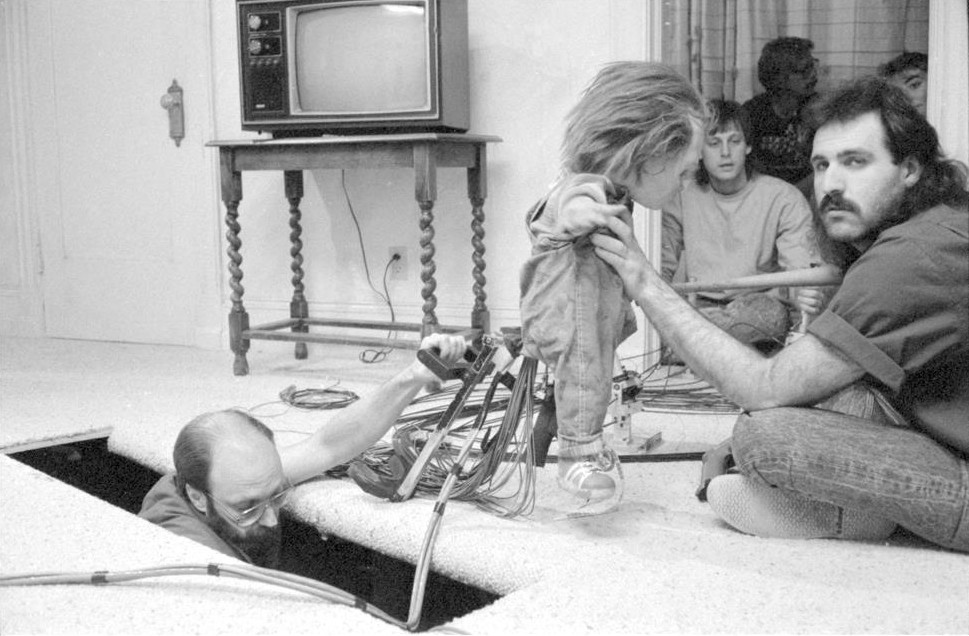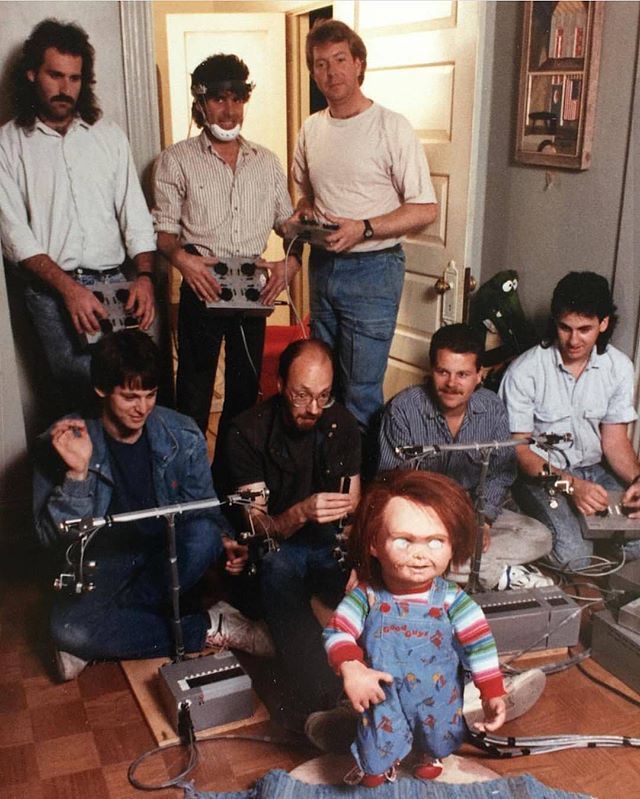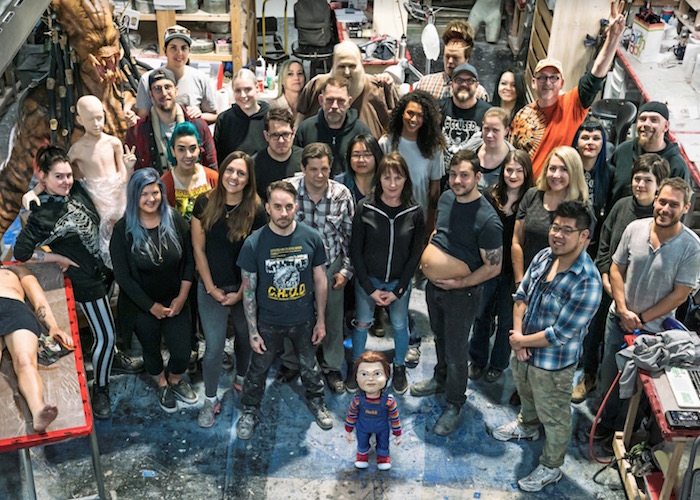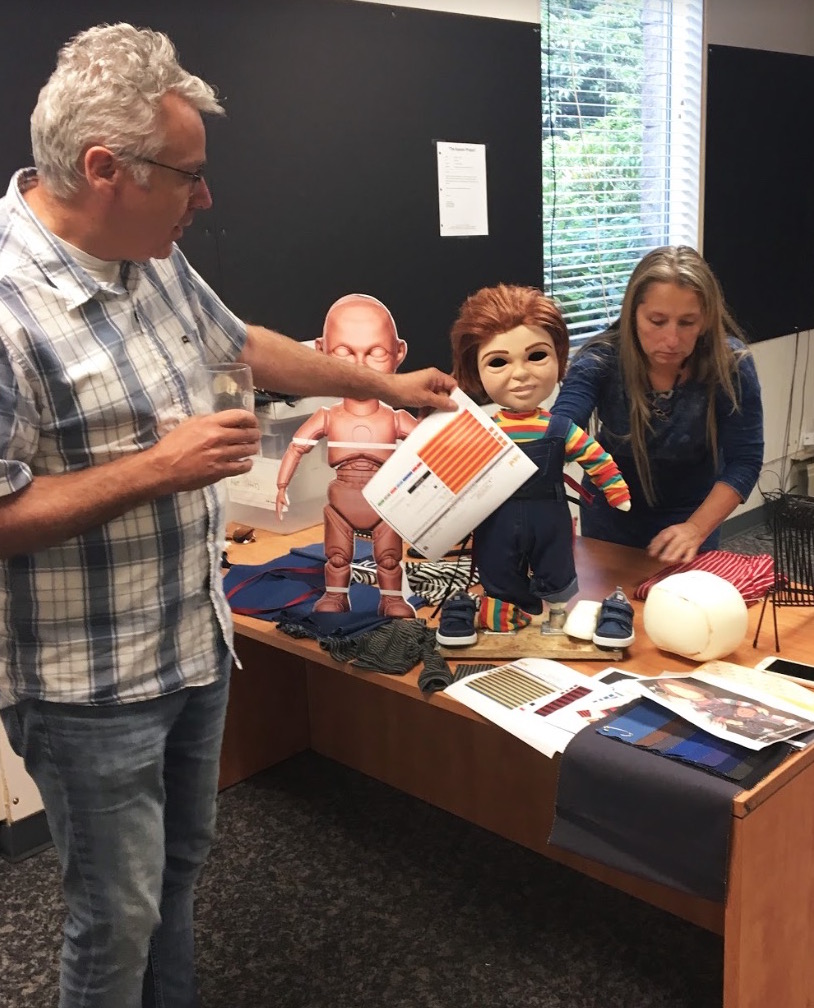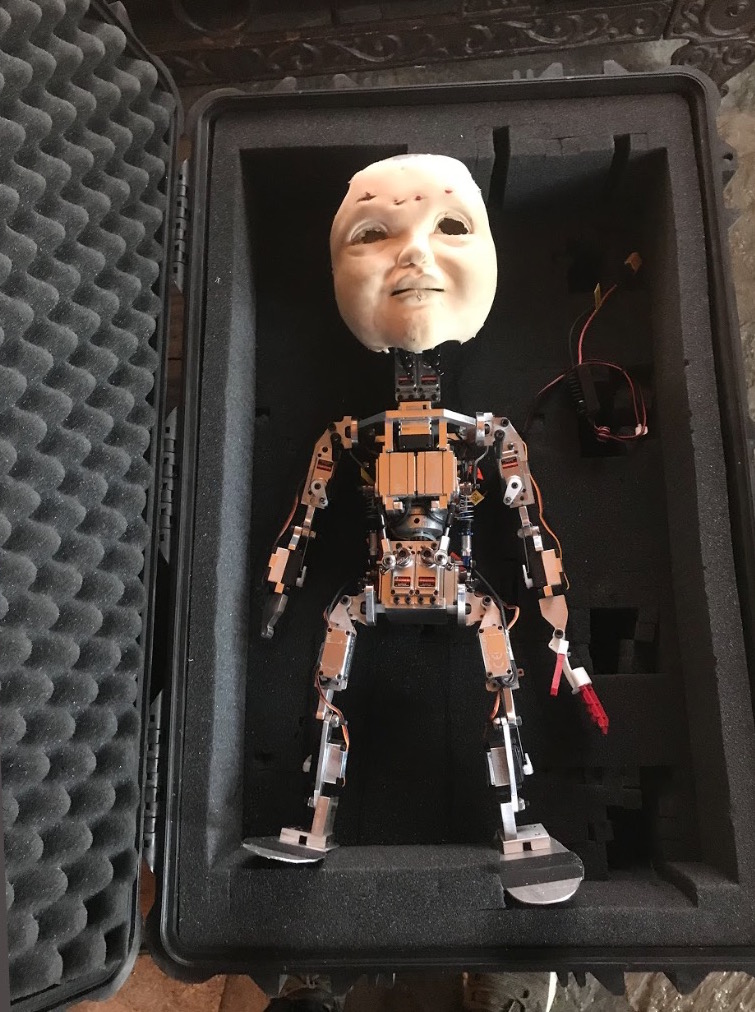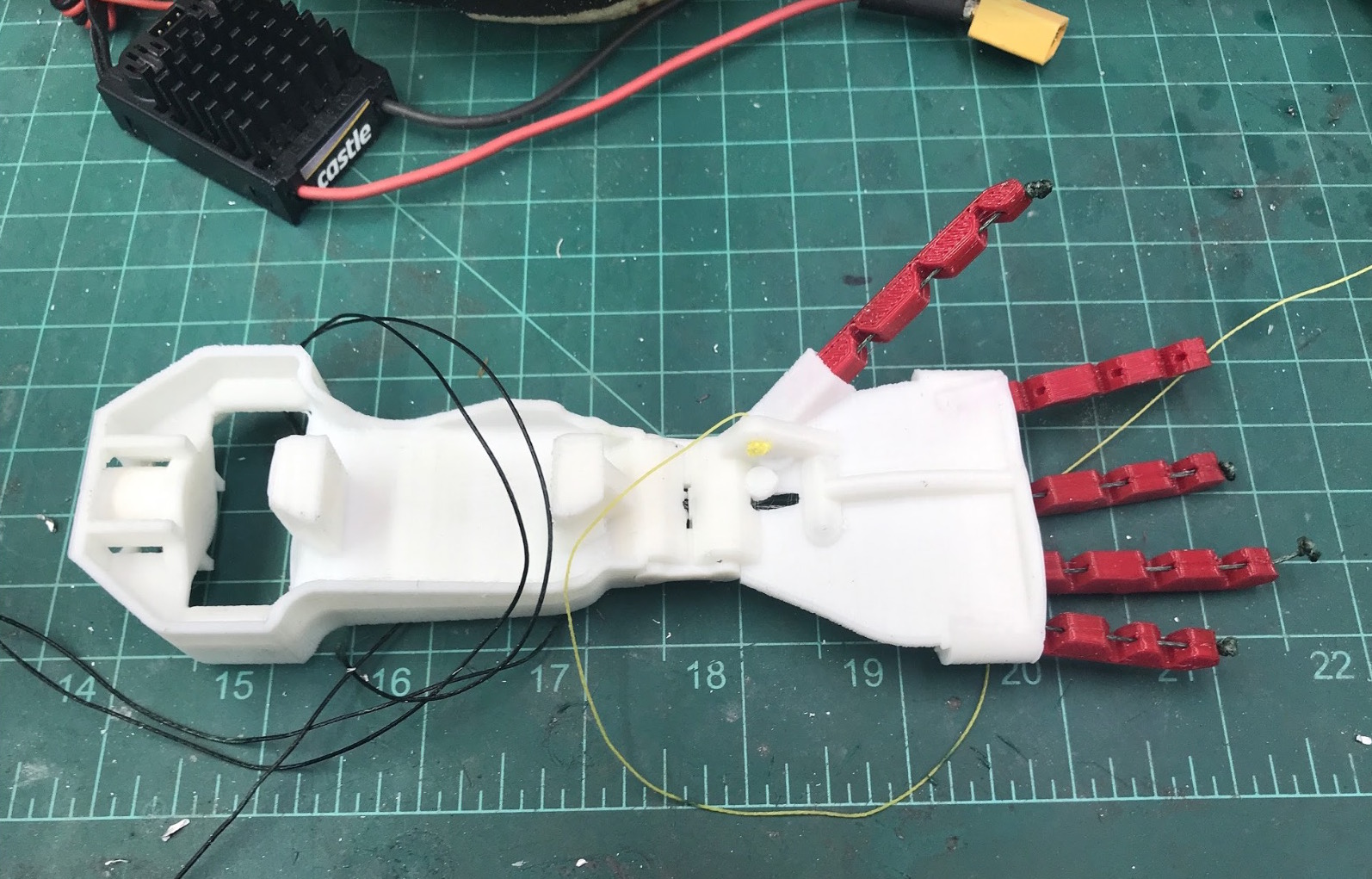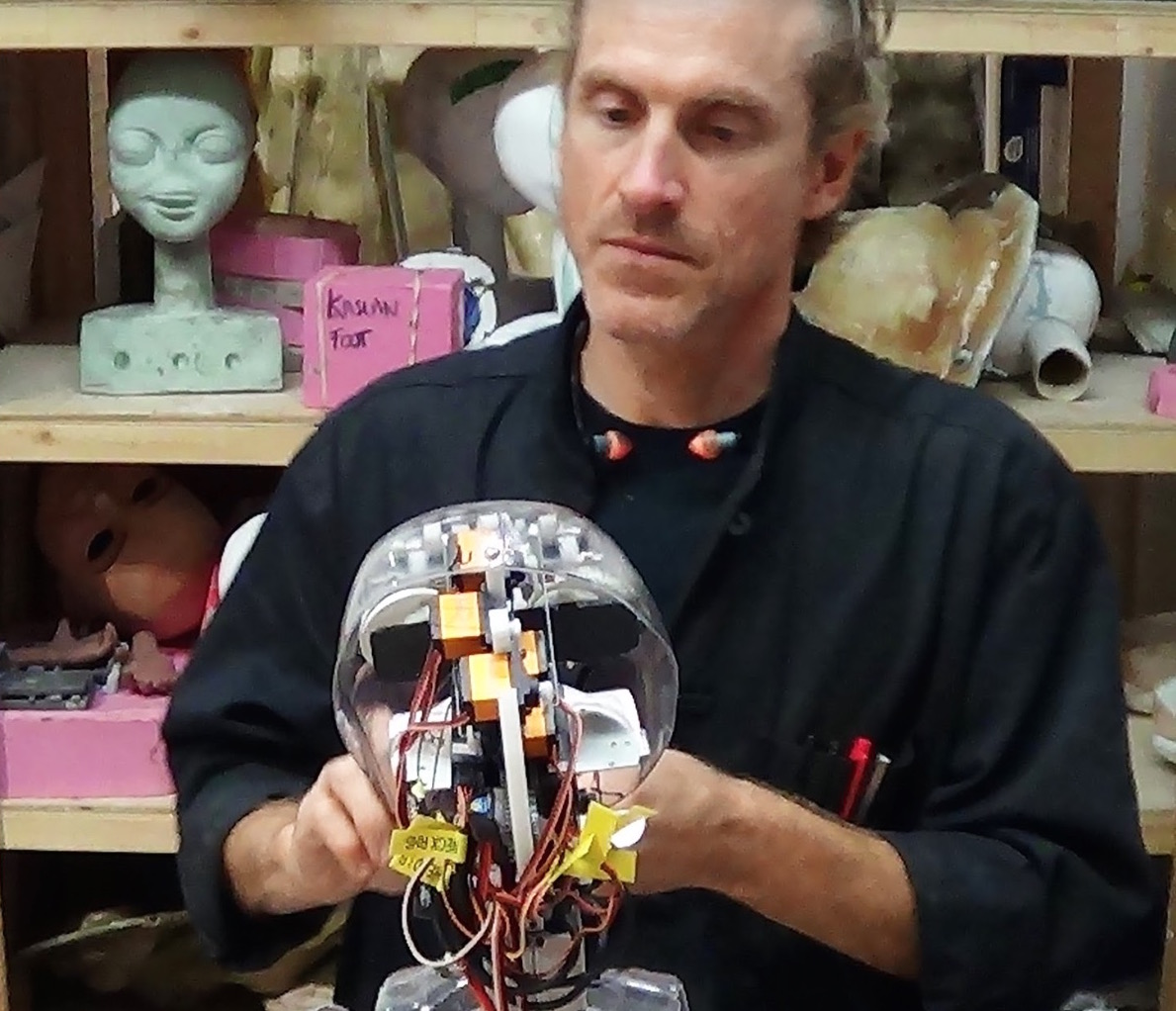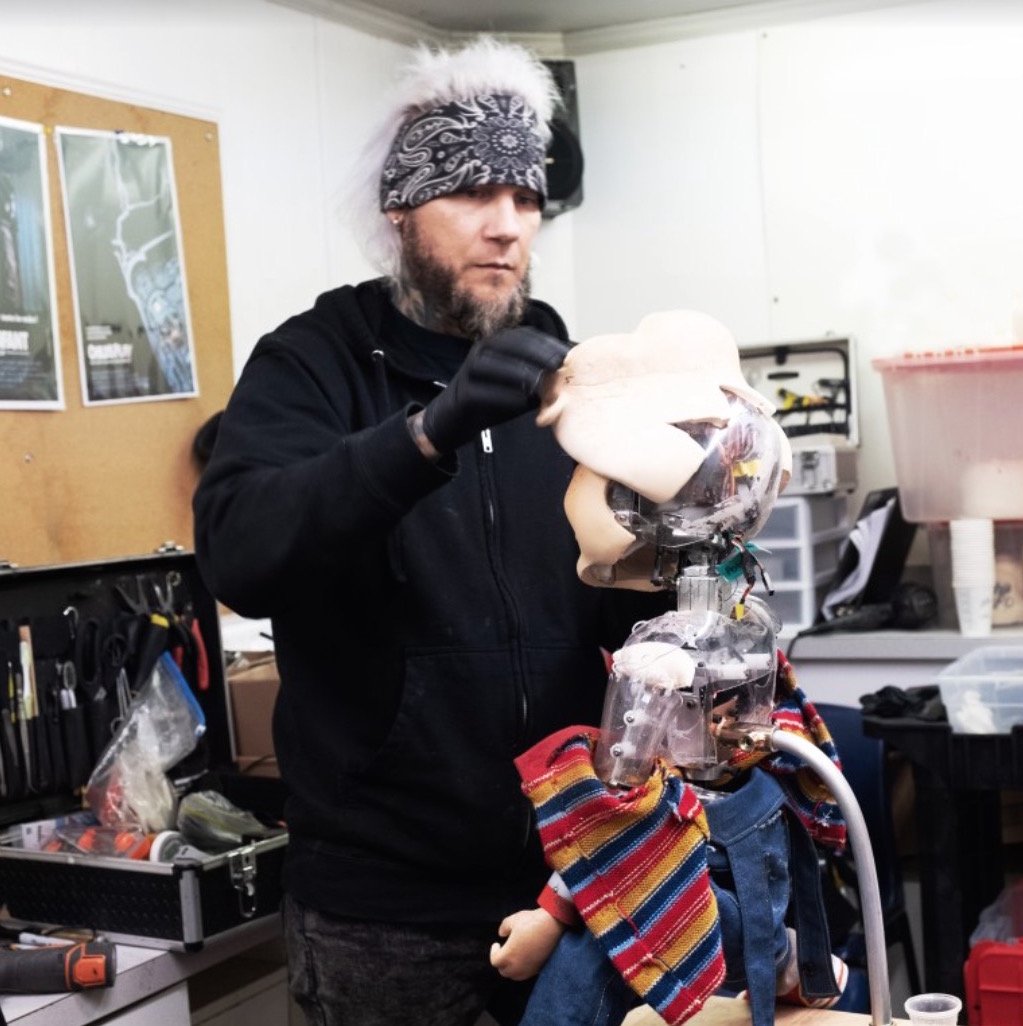How The 'Child's Play' Remake Keeps The Series' Practical Effects Legacy Alive
There's a reason why the term "movie magic" exists. Movies depict worlds outside out of our mundane reality by stretching deep into the far corners of our minds and extracting experiences we would otherwise never know. Monsters are brought to life in order to haunt our dreams and, if effective, linger decades later with spin-off films evolving into a beloved franchise. A large part of movie magic is conducted by those behind the camera: production designers, composers, costume designers, and of course, special effects artists.
This certainly applies to the new Child's Play, which offers a modern take on the iconic horror series while also being decidedly old school with its practical killer doll.
The 1980s were a prime time for practical effects, specifically within the horror genre. The tactile approach to making monsters caused them to be infinitely more terrifying for audiences. The suspension of disbelief was blurred as a result of their physical construction, animated movements, and often gory rampage. Thanks to Walt Disney's theme parks, animatronics transcended into the world of film. Groundbreaking robotics, clay molding, and even commonplace household products all amalgamated into some of the most frightening and iconic monsters in horror that still scare viewers today.Special effects make-up designer Rob Bottin creeped out audiences in Chuck Russell's 1988 remake of The Blob by using a colorfully horrific approach to a creature that lacked a specific form. The playfulness of his monstrous perversion was exemplified in the experimental technical methods used to detail his creature, along with its victims. Bubblegum, K-Y jelly, Jello, and creamed corn were all items utilized to lure audiences away from typical effects possessing excessive amounts of blood, gore, and the viscera. Chris Walas and Stephan Dupuis created the repulsive "Brundlefly" creature in The Fly, which earned the FX duo an Academy Award for Best Makeup. Employing puppetry, prosthetics, and a full body suit, the "Brundlefly" is a practical effects marvel on par with John Carpenter's The Thing.In 1988, Kevin Yagher created the notorious red-headed killer doll, Chucky, in Child's Play. Showcasing advanced animatronics for the times, Yagher's construction of the Chucky doll influenced special effects artists for decades and most recently, MastersFX, the team behind the Child's Play remake.
Child’s Play 1988
Special effects guru Rick Baker recommended Kevin Yagher after his work on Nightmare on Elm Street 3: Dream Warriors, where he constructed an animatronic head of Freddy Krueger. At only twenty-four years old, Yagher and his team designed the Chucky doll with roma clay to construct a mold followed by a fiberglass and hard plastic core to put mechanisms in the fiberglass skin. Multiple people controlled the puppet at any given time. One puppeteer controlled the eyes by blinking and moving them left to right; another controlled the brows and cheeks; and another puppeteer controlled the mouth by moving its lips with joysticks along with his fingers. Three people alone controlled Chucky's face, and multiple dolls were used in the production. There was a Servo puppet that contained small motors frequently used in hobby planes and cars. Another version of Chucky was made entirely of cables. Additionally, a rod puppet of Chucky was used for burn sequences which was half a puppet, and another version had a motor inside the body in order to execute sequences of screaming and kicking. Since CGI was not available, in order to capture fast moving scenes of Chucky running, a little person by the name of Ed Gale (Howard the Duck, Spaceballs) was hired for various effects. At times, the production team built scaled sets to Gale's proportions to capture movements that otherwise would have been too challenging with a puppet. Another impressive amount of detail used in Chucky's construction was the evolution of his facial features. As the film progresses, Chucky's features appear less like a plastic doll and instead transform into more fleshy, human-like qualities. The longer Charles Lee Ray stays in the Good Guy doll's body, the more realistic his features become. His eyes grow deeper, his freckles and moles become more prominent, and his eyes transition from sparkling blue to translucent. This kind of technical care ties into the voodoo storyline since Chucky's origin is that of a serial killer named Charles Lee Ray whose soul is trapped in the doll.
Child’s Play 2019
In director Lars Klevberg's remake, a similar practical effects approach was taken by special effects legend Todd Masters (Night of the Creeps, Big Trouble in Little China), two-time Emmy Award winner and founder of MastersFX studio. A long-time friend and collaborator of Yagher who worked alongside each other on Tales From The Crypt, Masters incorporated several of the foundational methods and framework from the original Child's Play. A total of seven dolls (or "Hero" Chucky's) were used in the production of the film with the internal structure containing a series of animatronics helping to move all of the joints. Layered on top of that, was a plastic exoskeleton and skin made out of foam latex. However, the eyes were placed with digital movement while interchangeable hands were used for grabbing knives. The heads were also interchangeable and self-contained. Rod puppets were used with interchangeable "Hero Heads" similar to the original film. And a "Robo Chucky" was controlled by three to four puppeteers from top to bottom, fully self-contained and filled entirely with motors. The FX team, led by veteran puppeteer Keith Arbuthnot, along with Mike Fields, Jason Ward, and Josh Raymond, each controlled a different part of the doll.In speaking with Todd Masters earlier this week, he disclosed that his team created a few subtle nods to Yagher's original design within the base build. For example, the head construction is almost identical in terms of materials, despite having more modern motors these days and more responsive systems. The understructure is completely transparent in order to see any issues within the circuitry. This art of practical effects is on full display in some of the factory scenes in the beginning of the film. In regards to specific facial features, the approach was always led with practical effects but CGI was lightly layered in order to enhance various expressions. The remake extracts any sort of voodoo narrative from the original, instead focusing on an AI Chucky who experiences learned behavior by imprinting himself onto his owner. For inspiration, Klevberg, a new father during filming, brought in his own child to inspire the effects team. This method cemented the goal of capturing expressions and telling the story without dialogue and can be seen throughout the duration of the remake with Chucky's various emotions ranging from love, excitement, fear, shame, and rage. A team of forty people were on the special effects team working out of a couple of different shops, some days working around the clock over the span of eight weeks before shooting. This was about half the amount of people that worked on the original film.Practical effects are a beloved artfrom for cinephiles and hold a strong sense of nostalgia. Some of the most treasured and effective films are grounded in practical effects while audiences tend to have an apprehensive repulsion towards CGI. However, Masters explains there's a way for practical effects and CGI to be harmonious without taking away the tactile nature and artform of monster making. "At our shop, we love the mixture of practical and digital, to take things and mix them in a variety of ways. We're proponents for all different tools, types of technology, and ways of creating various effects. It comes down to resources and what's best for the picture. Filmmakers are starting to see both methodologies have their place, and sometimes you mix them, which can be even better." Masters and his teams produce a unique blend of practical and digital makeup along with special FX, animatronics and prosthetics, through a process called "dMFX" which has also been used on shows like True Blood and Six Feet Under. Despite the trepidation towards CGI by moviegoers, Child's Play is a prime example of how it can be successfully applied as a polish and enhancement alongside practical effects. And no matter what, the skillful artform of practical effects will always continue to be a part of that special movie magic that keeps audiences coming back for more year after year.

